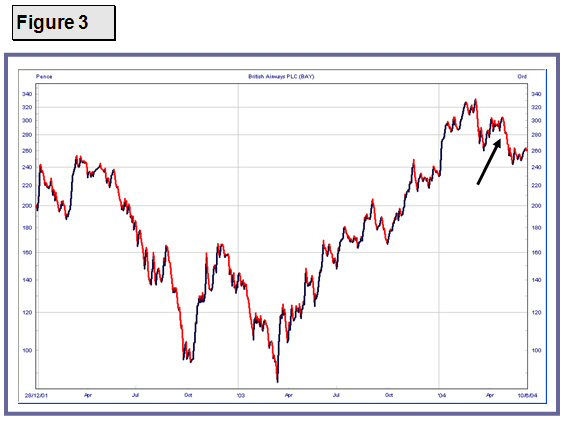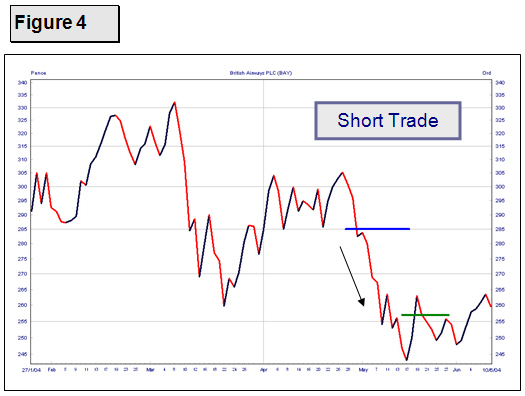The first thing to emphasise here is that the beauty of spread trading is that it is just as easy to go short as long. If you are used to the conventional method of buying shares for investment or trading, you may find that going short is a strange thing to do.
To start with you may also find it difficult to spot short trades because you are not used to looking for them. I urge you to educate yourself and your eye to ensure that you give equal importance to short trades. This is for two reasons -:In Figure 3 is a chart of a better-known FTSE 100 company, British Airways. Let's assume here that in April 2004 (arrow) you notice that the share price is likely to fall. In order to profit from that you need to go 'short'.
 |
Again, let's take a closer look at the chart to see how this will work.
 |
In the above example on the 30th April you decide to go short when the market mid price for British Airways is 285 (£2.85).
The spread offered by the trading company at that time was:
284.8 to 286.6 (a spread of 1.8).
You sell at 284.8 (sell price).
On the 20th May you decide to close the trade. The market mid price is 257 (£2.57) and the spread offered by the trading company at that time is:
256.5 to 258.8 (a spread of 2.3).
You buy at 258.8 to close the trade.
Your profit is 284.8 - 258.8 = 26 points.
There are a couple of things in that last trade worth looking out for -:Let's look at these in more detail.
The content of this site is copyright 2016 Financial Spread Betting Ltd. Please contact us if you wish to reproduce any of it.